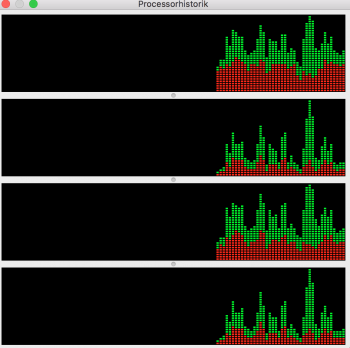Tip from someone who's been buying computers since the 90s:
Don't try and "future proof" beyond 3 years.
Buy something mid-spec (or rather, "appropriate" spec) today, and upgrade more often.
When you need the additional power it will be cheaper. Pass your 2-3 year old machine onto someone else, and get something more powerful sooner. Put the money you WOULD have spent on the top of the line system in the bank, and spend it in 2 year's time on a new box. Sell the old one for reasonable money.
Trying to stretch a machine out for more than 5 years is just setting yourself up for hardware failure (and then you're screwed anyway and wasted your money), super expensive purchase price, and if you do ever need to upgrade it, expensive upgrades because the standards for everything change (look up the prices of DDR2 RAM vs. DDR3 or DDR4 some time - and DDR2 is slower).
Trying to stretch a machine to 10 years is just sheer lunacy. Well let me re-phrase. trying to purchase with the intent of keeping for 10 years is. If it is still working after 6, fine... just be aware that any spec upgrades you do today will do very little to improve your system's longevity vs. the current mid-range/base.
The price/performance curve is not a straight line. A machine half the cost of top of the line typically has 80% of the performance unless you're talking about specialist tasks.
Tech does not stand still.
To put things in context, 10 years ago I was using (I think) a Pentium D 930 (dual core) with 1 GB of RAM, Nvidia 7600GT and a 250 GB hard drive. That, at the time was a reasonably high end PC. It wouldn't run much of anything today. Certainly not quickly, and it would have been slow garbage for the past 6 years at least.
Don't get me wrong, if you're doing something for work that demands maximum performance today, get it. But then you'd be looking at the Mac Pro... and even if you were to buy one of those, expecting it to last 10 years is wishful thinking. You might get lucky, but banking on it is foolish.
Especially with so much revolutionary tech right on the horizon like intel Xpoint memory, the coming massive increases in core counts, massive storage speed improvements we're seeing right now, etc.
edit:
re: dual core still on sale... sure. but clock-rates have stopped increasing and all the major operating systems have done major work to increase threading, and the ability to use more threads. intel is working on many core CPUs, the Xeons are already up to 20 cores or more, you're going to see an explosion in core counts over the next 5-10 years. Software has been holding multi-core back, but this problem is far less of a thing with recent OS platforms.


